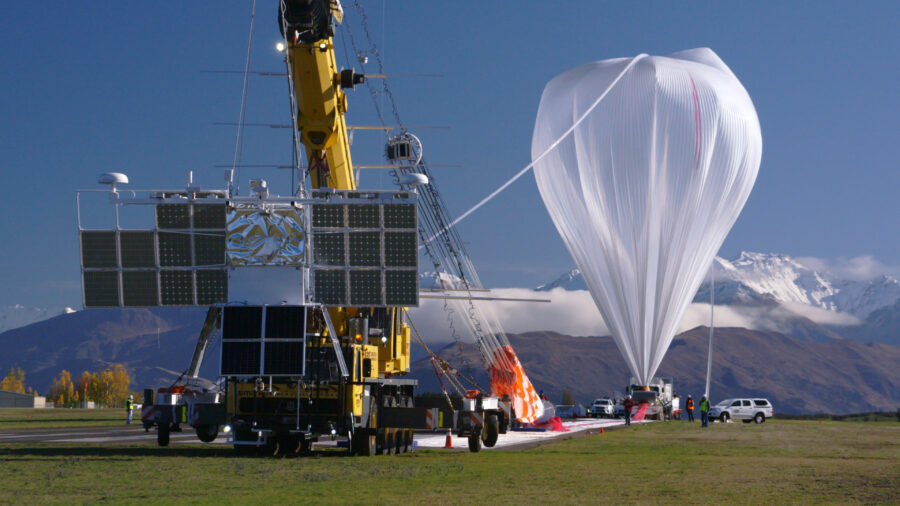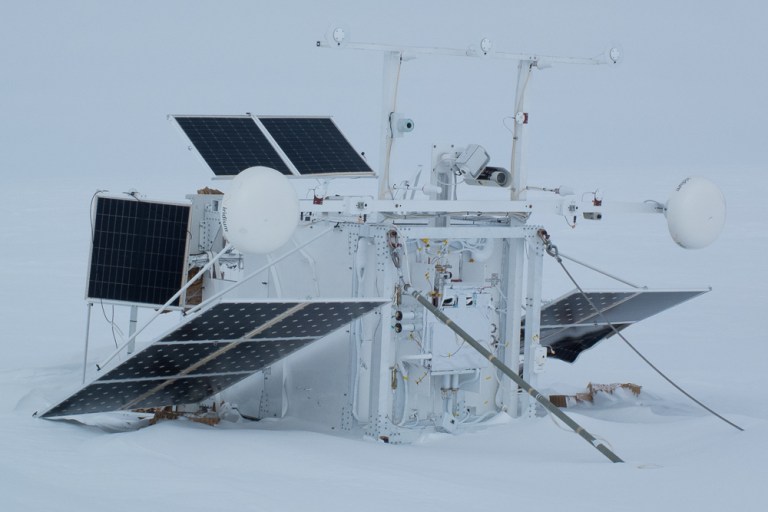The COSI mission will study the recent history of star birth, star death, and the formation of chemical elements in the Milky Way.

University of Berkeley / COSI
NASA announced this week that it has selected the Compton Spectrometer and Imager (COSI) gamma-ray telescope, led by John Tomsick (University of California, Berkeley), for development as part of its Small Explorer (SMEX) program. The mission will cost approximately $145 million, excluding launch carrier.
With an expected launch date in 2025, COSI will study the recent history of star birth, star death, and the formation of chemical elements in the Milky Way. To accomplish this, the observatory will look at galactic sources producing gamma-ray energies between 0.2 and 5 million electron-volts (0.2–5 MeV).
COSI will be the first gamma-ray telescope mission designed to catch the annihilation of positrons, the anti-matter version of electrons. What's more, the telescope will have the resolution to pinpoint where these particles come from. Since the 1970s, astronomers have seen gamma-ray emission attributed to positrons coming from the galactic center region, but their source(s) are still mysterious.
The mission will also probe the formation and decay of heavier elements revealed in cataclysmic supernovae. In addition, the observatory will pinpoint gamma-ray counterparts to exotic sources across the sky, including supernovae, blazars, and merging neutron stars producing gravitational waves.
"COSI will fly after the next upgrade to the gravitational wave detectors, so we are expecting to see larger numbers of events where gravitational waves and gamma-rays are detected," says Tomsick.
Designing the Detector
Gamma rays are high-energy photons that are difficult to detect and focus, but they shed light on some of the most energetic processes in the universe. COSI's design offers improvements in spectral and angular resolution, all-sky coverage, and increased sensitivity at gamma-ray wavelengths versus previous observatories.
Because Earth’s atmosphere absorbs gamma-rays, gamma-ray astronomy must be done from either high-altitude balloons or space. So as part of the mission's development, the team constructed a balloon-borne version of COSI as a proof of concept. The team launched the telescope payload aboard NASA’s Superpressure Balloon from the Wanaka, New Zealand site in May 2016. (It was aloft nearly 47 days, a record for a mid-altitude, large scientific research balloon.)

University of Berkeley / COSI

University of Berkeley/COSI/Scott Battion
"COSI is a Compton telescope, a type of telescope that observes what's known as Compton scattering, and its operation is very different from an optical or even an X-ray telescope," says Tomsick.
Compton scattering gets its name from gamma-ray researcher and pioneer Arthur Compton, who realized that when a gamma-ray photon interacts with a charged particle like an electron, the photon gives up some of its energy to the electron. By tracking the scatter pattern of a gamma ray in the detector, researchers can figure out where it came from, roughly speaking.
"The Compton scattering angle defines a circle on the sky," explains Tomsick. "Once you have hundreds or thousands of gamma-rays, the sources [they're coming from] show up in the sky because the circles overlap at the locations of the sources."

University of California, Berkeley / COSI
The name Compton crops up often in high-energy astrophysics. COSI shares it with the Compton Gamma-Ray observatory, which operated at 0.02 MeV to 30 GeV and was in Earth orbit from 1991 to 2000. The observatory had an instrument named COMPTEL that acted similarly to COSI, but COSI will feature a field of view four times larger, with angular resolution twice as sharp and energy resolution 20 times better. COSI will also cover the crucial 511 keV electron-positron annihilation line.
Currently, NASA has two other orbiting gamma-ray observatories in operation, the Neil Gehrels Swift Observatory and the Fermi Gamma-ray Space Telescope.
This week’s selection comes as another SMEX mission is readied for launch: the Imaging X-Ray Polarimetry Explorer (IXPE), due to lift off from the Cape on December 9th atop a SpaceX Falcon 9 rocket.
COSI was one of four mission concepts in the running for the last round of selections. Two others were the Large Area burst Polarimeter (LEAP) and the Gravitational-wave Ultraviolet Imager, both of which would have been mounted aboard the International Space Station. The final runner-up was the Extreme-ultraviolet Stellar Characterization for Atmospheric Physics and Evolution (ESCAPE) mission.
SMEX alumni include missions such as the Interstellar Boundary Explorer (IBEX) and the Nuclear Spectroscopic Telescope Array (NuSTAR).
It will be exciting to see what COSI reveals about the gamma-ray universe.
 1
1









Comments
Bob-Hall
October 23, 2021 at 11:52 am
On YouTube, Dr. Boggs speaks as if the COSI satellite will be the first to detect sources of the 0.511 MeV positron-electron decay. Yet, as briefly mentioned in the text, several detections of the 1/2 MeV gamma-rays, some clearly connected to specific sources, had already been made from the early 1970s—example sources are the Crab Nebula (and its pulsar) and the radio galaxy (with a massive central black hole) Centaurus A. The advantage of COSI will be that it can more precisely pinpoint the sources of positron-electron annihilation.
Also, a diagram showing the design of the COSI components and their functions would be interesting.
You must be logged in to post a comment.
You must be logged in to post a comment.